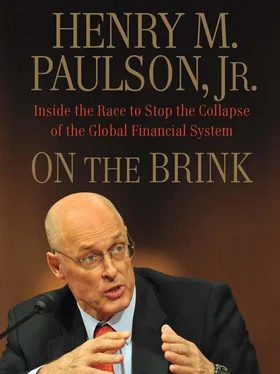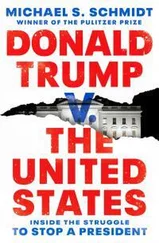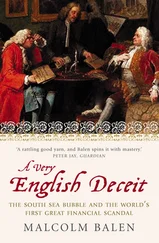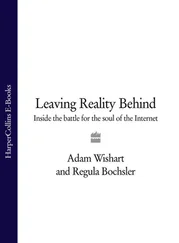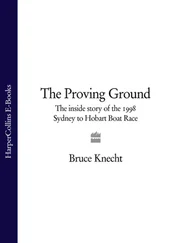I explained that we had teams of lawyers, bank examiners, computer specialists, and others on standby, ready to roll into the companies’ offices and secure their premises, trading floors, books and records, and so forth. We had already picked replacement chief executives. David Moffett, a former chief financial officer from U.S. Bancorp, one of the few nearly pristine big banks in the country, was on board for Freddie Mac. For Fannie Mae we’d selected former TIAA-CREF chief executive and chairman Herb Allison. (He was vacationing in the Caribbean, and when I reached him later and twisted his arm to come to Washington the next day, he’d initially protested: “Hank, I’m in my flip-flops. I don’t even have a suit down here.” But he’d agreed to come.)
White House staff had been shocked when we first suggested conservatorship for Fannie and Freddie, which had the reputation of being the toughest street fighters in Washington. But they liked the boldness of the idea, as did the president. He had a deep disdain for entities like Fannie and Freddie, which he saw as part of a permanent Washington elite, detached from the heartland, with former government officials and lobbyists cycling through their ranks endlessly while the companies minted money, thanks, in effect, to a federal entitlement.
The president wanted to know what I thought the longer-term model for Fannie and Freddie ought to be. I was keen to avoid any existential debate on the two companies that might bog down in partisan politics on the Hill, where Fannie and Freddie had ardent friends and enemies.
“Mr. President,” I replied, “I don’t think we want to get into that publicly right now. No one can argue that their models aren’t seriously flawed and pose a systemic risk, but the last thing we want to start right now is a holy war.”
“What do you suggest?”
“I’ll describe this as a time-out and defer structure until later. I’ll just tell everybody that we’re going to do this to stabilize them and the capital markets and to put the U.S.A. behind their credit to make sure there’s mortgage finance available in this country.”
“I agree,” the president said. “I wouldn’t propose a new model now, either. But we’ll need to do it at the right time, and we have to make clear that what we are doing now is transitory, because otherwise it looks like nationalization.”
I said that I had come to believe that what made most sense longer-term was some sort of dramatically scaled-down structure where the extent of government support was clear and the companies functioned like utilities. The current model, where profits went to shareholders but losses had to be absorbed by the taxpayer, did not make sense.
The president rose to signal the meeting was over. “It will sure be interesting to see if they run to Congress,” he said.
I left the White House and walked back to Treasury, where we had to script what we would say to the two mortgage agencies the following day. We wanted to be sure we had the strongest case possible in the event they chose to fight. But even now, at the 11th hour, we still had concerns that FHFA had not effectively documented the severity of Fannie’s and Freddie’s capital shortfall and the case for immediate conservatorship.
The cooperation among the federal agencies had generally been superb, but although Treasury, the Fed, and the Office of the Comptroller of the Currency (OCC) agreed, FHFA had been balky all along. That was a big problem because only FHFA had the statutory power to put Fannie and Freddie into conservatorship. We had to convince its people that this was the right thing to do, while making sure to let them feel they were still in charge.
I had spent much of August working with Lockhart, a friend of the president’s since their prep school days. Jim understood the gravity of the situation, but his people, who had said recently that Fannie and Freddie were adequately capitalized, feared for their reputations. The president himself wouldn’t intervene because it was inappropriate for him to talk with a regulator, though he was sure Lockhart would come through in the end. In any event, I invoked the president’s name repeatedly.
“Jim,” I’d say, “you don’t want to trigger a meltdown and ruin your friend’s presidency, do you?”
The day before I’d gone to the White House, I spoke with Lockhart by phone at least four times: at 9:45 a.m., 3:45 p.m., 4:30 p.m., and then again later that night. “Jim, it has to be this weekend. We’ve got to know,” I insisted.
Part of FHFA’s reluctance had to do with history. It had only come into existence in July, as part of hard-won reform legislation. FHFA and its predecessor, the Office of Federal Housing Enterprise Oversight, which Lockhart had also led, were weak regulators, underresourced and outmatched by the companies they were meant to oversee, and constrained by a narrow view of their charters and authorities. FHFA’s people were conditioned by their history to judge Fannie and Freddie by their statutory capital requirements, not, as we did, by the much greater amounts of capital that were necessary to satisfy the market. They relied on the companies’ own analyses because they lacked the resources and ability to make independent evaluations as the Fed and OCC could. FHFA preferred to take the agencies to task for regulatory infractions and seek consent orders to force change. That approach wasn’t nearly enough and would have taken time, which we did not have.
Complicating matters, FHFA had recently given the two companies clean bills of health based on their compliance with those weak statutory capital requirements. Lockhart was concerned—and Bob Hoyt, Treasury’s general counsel, agreed—that it would be suicide if we attempted to take control of Fannie and Freddie and they went to court only to have it emerge that the FHFA had said, in effect, that there were no problems.
We had been working hard to convince FHFA to take a much more realistic view of the capital problems and had sent in teams of Fed and OCC examiners to help them understand and itemize the problems down to the last dollar. The Fed and the OCC saw a huge capital hole in Fannie and Freddie; we needed to get FHFA examiners to see the hole.
Lockhart had been skillfully working to get his examiners to come up with language they could live with. But on Thursday they still had not done enough to document the capital problems. We sent in more help. Sheila Bair, chairman of the Federal Deposit Insurance Corporation, which had ample experience in closing banks, agreed to send me her best person to help write a case.
Finally, Lockhart managed to get his examiners to sign off on what we needed. Either Jim had worn those examiners down or they had come to realize that immediate conservatorship was the best way for them to resolve this dangerous situation with their reputations intact.
Thursday evening, Jim put in calls to the CEOs of Fannie and Freddie, summoning them to a meeting Friday afternoon that Ben and I would attend at FHFA’s headquarters on G Street. (Jim didn’t speak directly to Mudd until Friday morning.) We arranged for the first meeting to start just before 4:00 p.m. so that the market would be closed by the time it ended. We decided to lead with Fannie Mae, figuring they were more likely to be contentious.
The companies obviously knew something was up, and it didn’t take long for me to start getting blowback. Dan Mudd called me on Friday morning and got straight to the point.
“Hank,” he asked, “what’s going on? We’ve done all you asked. We’ve been cooperative. What’s this about?”
“Dan,” I said, “if I could tell you, I wouldn’t be calling the meeting.”
We’d been operating in secrecy and had managed to avoid any leaks for several weeks, which may be a record for Washington. To keep everyone in the dark, we resorted to a little cloak-and-dagger that afternoon. I drove to FHFA with Kevin Fromer, my assistant secretary for legislative affairs, and Jim Wilkinson, my chief of staff, and instead of hopping out at the curb, we went straight into the building’s parking garage to avoid being seen. Unfortunately, Ben Bernanke walked in the front door and was spotted by a reporter for the Wall Street Journal , who posted word on the paper’s website.
Читать дальше
